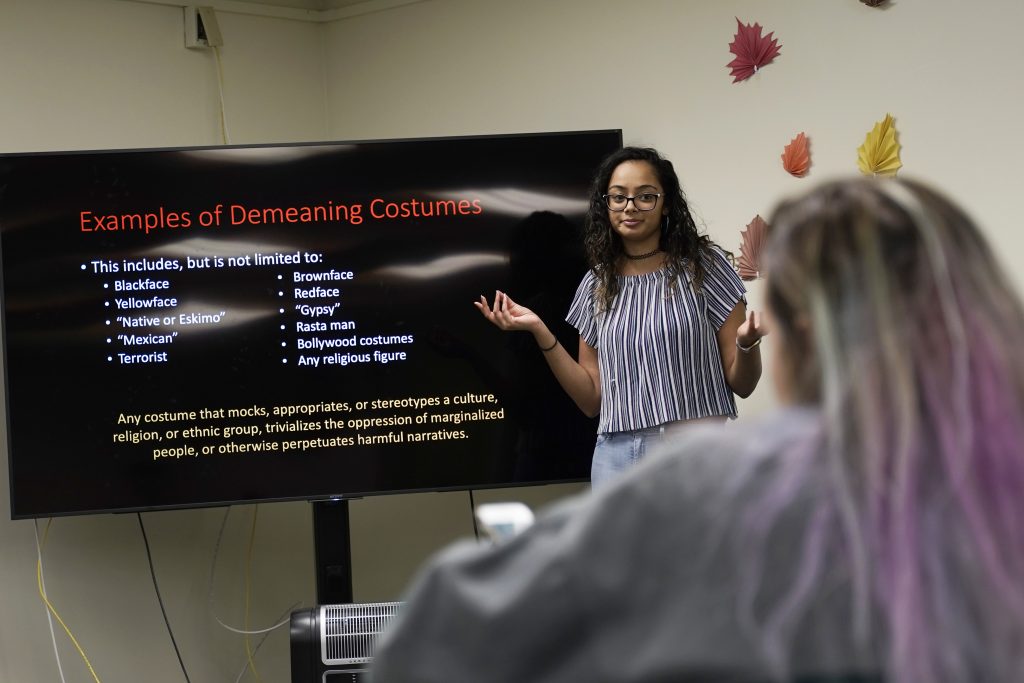
With Halloween approaching, Binghamton University’s Multicultural Resource Center (MRC) hopes to start a conversation on culturally insensitive costumes.
On Monday, the MRC held “What Not to Wear: Halloween Edition,” an event that featured a presentation on inappropriate Halloween costumes. The event is the first of its kind to be held by the office, which aims to educate the campus community on cultural diversity.
Two MRC student managers, Julia Podair, a junior majoring in economics, and Sameerah Shaik, a senior double-majoring in integrative neuroscience and Spanish, presented examples of cultural appropriation, which is defined as “the act of taking or using things from a culture that is not your own, especially without showing that you understand or respect that culture.” Podair said she was inspired to host the presentation after she attended a similar event in Mountainview College last year. She talked to Shaik about the idea, and the two decided to hold the event in the MRC to attract students living across campus and off campus.
“I saw this as a great way to maybe expand and reach some different people besides people in Mountainview because it was a very small event,” Podair said. “MRC’s a very centered place — could possibly reach more people.”
Podair and Shaik paid particular attention to costumes that imitate another race, religion or ethnicity, such as costumes depicting blackface or religious figures. Shaik, who has Indian heritage, said she personally dislikes when people imitate Indian culture.
“I don’t like the idea when people mimic Indian culture, because I’m Indian myself,” Shaik said. “Especially with the bindi, that has a lot of traditional value. They belittle something that has such huge value and significance.”
According to Podair, she has also experienced uncomfortable situations with costumes on Halloween. One time, several of her friends wanted to dress as nuns for Halloween, but Podair said she didn’t think it was appropriate.
“I was just totally not OK with it,” Podair said. “I’m not a religious person, but I didn’t want to impersonate someone’s religion or religious figure that could mean something to someone else.”
After the presentation, attendees discussed their personal experiences with cultural appropriation on Halloween and brainstormed solutions to prevent future offenses. According to Podair and Shaik, the best way to prevent insensitive costumes is to speak out and educate fellow students.
“I just think the more people are knowledgable about certain topics, the better,” Podair said. “I think that a lot of times people at our age, being on the college level, are already taught a certain thing and have been raised a certain way to believe certain beliefs. I think that exposing them to something that’s possibly different and controversial to what they believe is a good thing.”
Julia D’Agostino, a sophomore majoring in philosophy, politics and law, said she attended the event to become more informed.
“I think cultural appropriation can kind of be like a buzzword, and people don’t really know what it means,” D’Agostino said. “And they just use it in arguments, so it’s nice to clarify it and hear the actual meaning of it in an event like this.”


